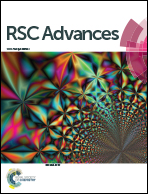New surgical meshes with patterned nanofiber mats
Abstract
Abdominal wall hernia repair is one of the most common general surgeries nowadays. Surgical meshes used in hernia repair indeed improved the outcomes, but complications like chronic pain or hernia recurrence partly caused by mechanical mismatch cannot be ignored. This work designed six warp-knitted polypropylene (PP) meshes and found the properties of surgical meshes could be improved to better mimic the performances of human abdominal wall by designing meshes with appropriate textile structures. Poly-caprolactone was electrospun onto newly designed PP meshes and formed a thin layer of patterned nanofiber mat. The pattern of nanofiber mats was affected by the structure of meshes. Diverse nanofiber morphology (straight aligned, straight random or spiral random pattern) and fiber diameters (50–70 nm ultra-thin nanofibers or from 330 nm to 700 nm nanofibers) were observed in different regions of a single patterned nanofiber scaffold. The addition of electrospinning nanofibers enhanced cell adherence and proliferation as compared with naked PP meshes. Cell actin filaments spread along the nanofibers and formed a morphology exactly similar with the patterned mats on day 7. Furthermore, cells on thin and aligned patterned nanofibers showed much more elongation and better orientation than that of the spiral random fibers, suggesting that cell morphology can be altered by changing the patterns of scaffolds. This study helps us in further understanding the properties of hernia repair meshes with their textile structures and the biological interactions of cells with different substrates in order to develop new biomedical scaffolds with desired properties.



 Please wait while we load your content...
Please wait while we load your content...